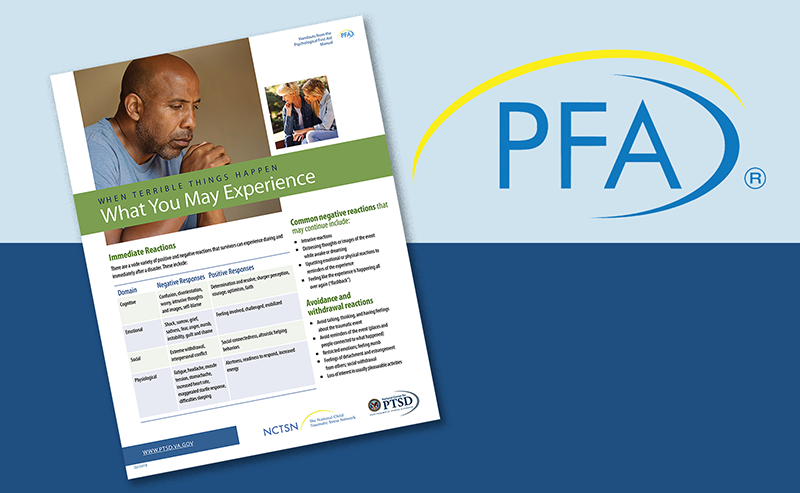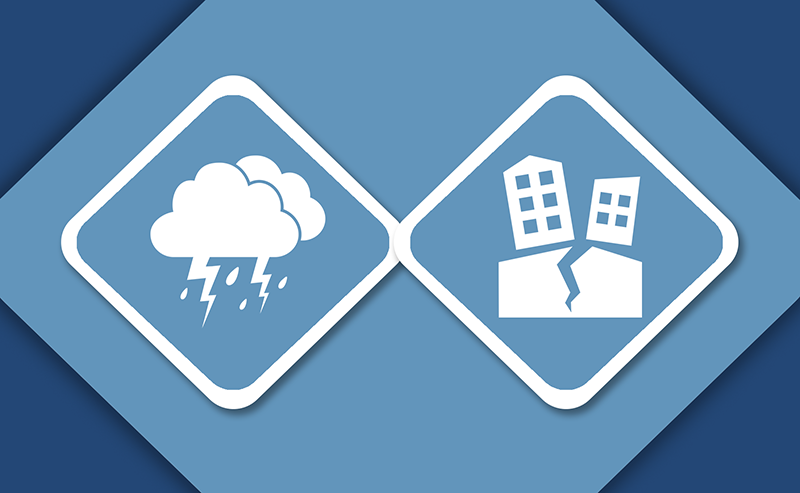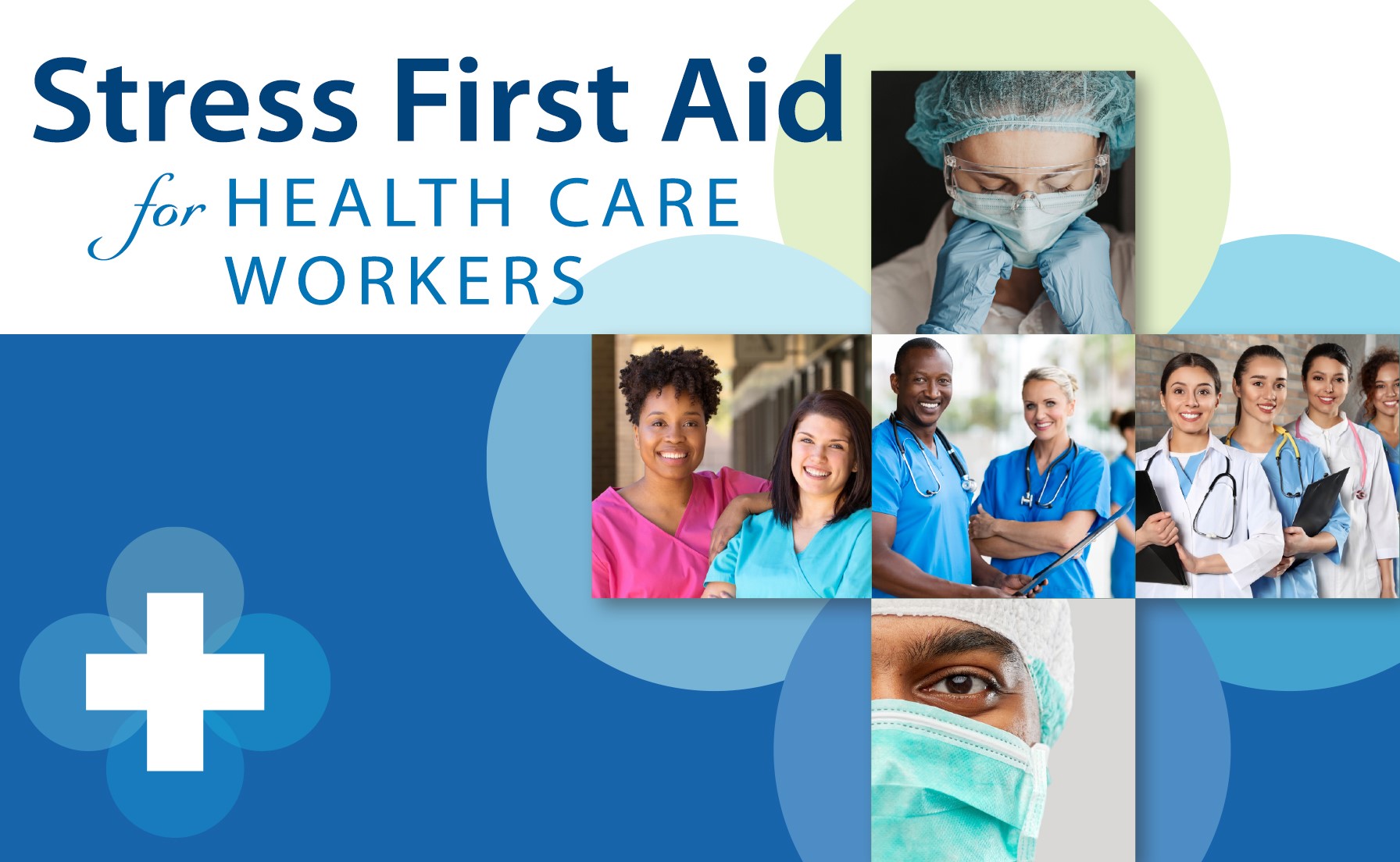PTSD: National Center for PTSD
For Community Organizations: Dealing with Disaster Events
For Community Organizations: Dealing with Disaster Events
What happens when a community is affected by a disaster event? The impact may range from slight disruption to great adversity, and dwindling resources or social support may affect residents. Disaster events can be natural or human-caused disasters, mass violence, or public health emergencies like disease outbreaks, chemical spills, or radiation emergencies. Depending on the event, long term effects may include loss of community cohesion or employment opportunities and residents may move out of the area.
There are 5 areas to focus on when providing assistance after disaster events: people's sense of safety, their sense of calm, their belief that they can do what they need to do to cope (self-efficacy), their connectedness with others, and their feeling of hope (1). Community organizations can use a variety of key actions to help residents in all ways that they are affected.
What can community organizations do to help community members' sense of safety?
Disaster events can affect people's ability to obtain food, housing, childcare, transportation, and other needs. When their basic needs are threatened, people do not feel safe and can become overwhelmed. Here are some things community organizations can do:
- Inform people about community resources to meet basic needs.
- Work with other community organizations to problem-solve ways to address safety concerns. Hold forums for residents to air concerns and offer suggestions.
- Sponsor community nights where people can meet to discuss common areas of interest. For example, law enforcement agencies can offer information on neighborhood watch programs, or volunteer opportunities with violence prevention programs for youth.
- Create online sites (like a website or social media account) that show events, opportunities, safety efforts, activities, and stories of resilience.
What can community organizations do to help community members' sense of calm?
Disaster events can cause people to feel frustrated, afraid, angry, or anxious. They might have trouble concentrating, sleeping, eating, controlling their temper, being with others, or completing daily tasks. When they see other community members experiencing the same problems, they may have an even harder time believing that things will get better. Community organizations can improve residents' sense of calm with the following strategies:
- Discuss wellness strategies (like diet, exercise, or sleeping habits) at community meetings or gatherings.
- Create online sites that give examples of how to cope.
- Be a role model for those around you.
- Encourage community religious leaders to add "hope and healing" services that focus on resilience and support.
- Encourage local agencies or schools to develop free practical information or programs focused on building and sustaining healthy community activities.
- Promote or increase the availability of low-cost, enjoyable, uplifting activities for the community.
What can community organizations do to help community members' self-efficacy or community efficacy?
Disaster events can affect people's sense of having the skills or resources to endure the difficulties they face individually and as a community. Community organizations can increase self- or community efficacy through the following activities:
- Create a centralized database of available services and resources that is updated regularly. Find multiple ways to circulate this information to the community.
- Encourage businesses to offer their employees resilience-building classes such as conflict resolution, anger management, cultural sensitivity, and crisis management, and to increase worker appreciation and recognition programs.
- Find grant funds to build community programs that bring people together and build their skills.
- Create volunteer opportunities and programs that provide leads to potential jobs.
- Encourage artists and theatres to sponsor events related to wellness and resilience.
What can community organizations do to promote connectedness among community members?
Disaster events can affect people's sense of connection with others in the community. They may stay at home more, have fewer resources to get out in the community, or feel too tired, emotional, or overwhelmed to be with others. They may miss out on receiving understanding and compassion from friends, a sense of well-being from helping others, distraction from worries, and chances to problem-solve and network. Community organizations can improve connectedness with the following actions:
- Seek grant funding or fundraisers and/or partner with other organizations, nonprofit service agencies, and schools to create opportunities for people to connect.
- Develop multiple ways to convey information about opportunities to connect, as well as messages that emphasize pride in the city or community.
- Work with cultural and faith-based leaders to build relationships and programs for people who may mistrust authorities in the community.
What can community organizations do to promote hope?
Disaster events can cause people to feel sad, discouraged, or angry. They can affect expectations that things will work out or their trust that everything is going to be alright. Community organizations can help with improving trust, meaning, and hope with the following strategies:
- Convey messages of hope, progress, and success during community gatherings.
- Develop multiple ways to highlight the community's strengths and offer solutions to concerns.
- Provide information about local, state, and federal resources through multiple media and community locations.
Summing It Up
Community organizations are in a unique position to foster resilience, safety, calming, connectedness, self-efficacy, and hope. As such, community organizations can make a big difference in individual and collective recovery from disaster events. Not all actions in this article are necessary or possible but choosing even a few can go a long way toward bringing about the changes essential in a community to overcome the stress caused by disaster events.
References
- Hobfoll, S. E., Watson, P. J., Bell, C. C., Bryant, R. A., Brymer, M. J., Friedman, M. J., et al. (2007). Five essential elements of immediate and mid-term mass trauma intervention: Empirical evidence. Psychiatry, 70(4), 283-315.
You May Also Be Interested In


























